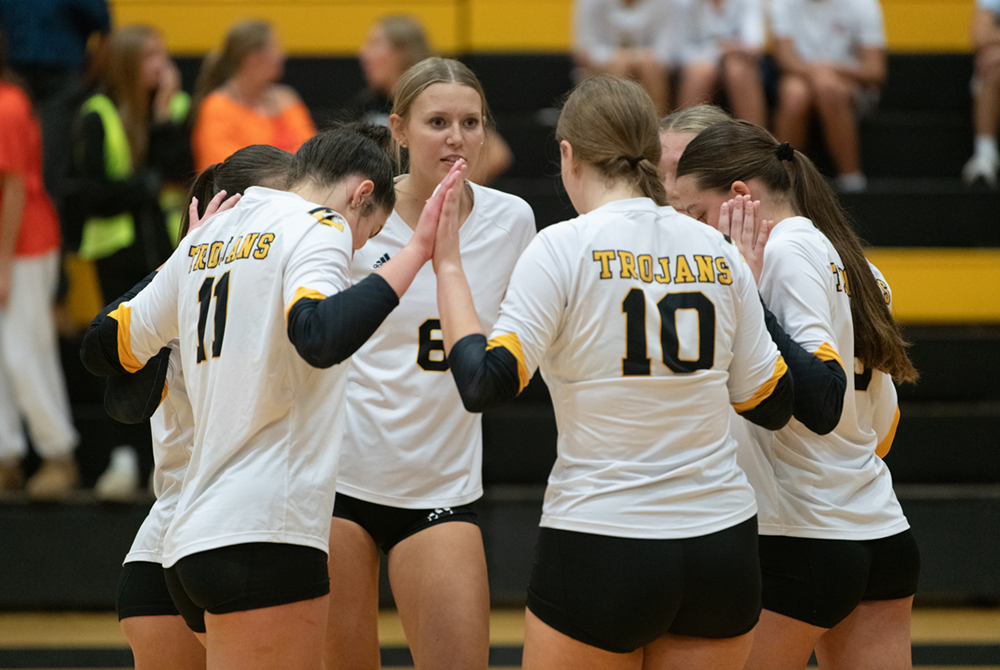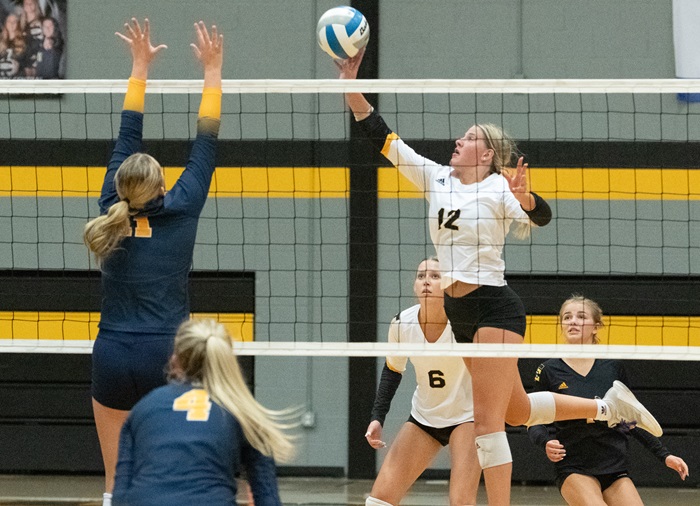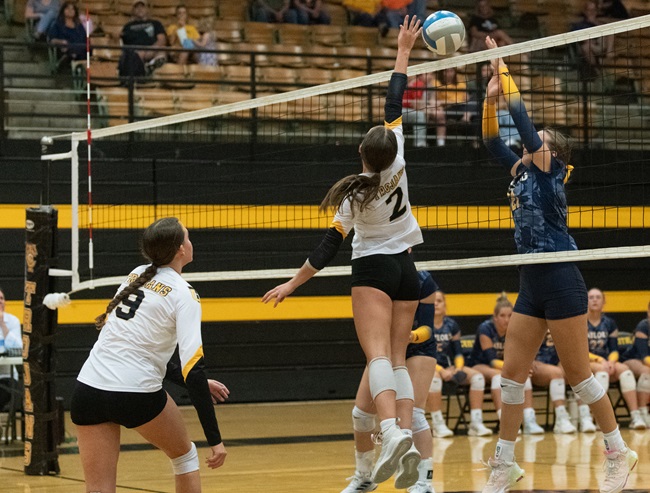
New Math: Division & Multiplication Problems
July 25, 2017
By Jack Roberts
MHSAA Executive Director
This is the second part in a series on MHSAA tournament classification, past and present, that will be published over the next two weeks. This series originally ran in this spring's edition of MHSAA benchmarks.
High school tournament classifications went viral before there was social media and most of us knew what “viral” meant.
Much as a virus infects computers today or has created epidemics of disease around the world for centuries, high school tournament classification – once introduced – tends to spread uncontrollably. Once started, it tends to keep expanding and rarely contracts.
While we are still some distance from providing every team a trophy as a result of expanding high school tournament classification across the country, there is criticism nevertheless that we are headed in that direction – a philosophy which is supposed to exist only in local youth sports for our youngest children.
Michigan could be blamed for all this. Michigan is generally accepted as the first state to provide different classifications for season-ending tournaments for different sized schools. It started a century ago. Today, every state has various classifications for its tournaments in most if not all sports. And it is a bit ironic that Michigan – creator of the classification chaos – more than most other states has kept the number of tournament classes or divisions under control.
Yes, there is evidence that tournament classifications have expanded over the years in Michigan, especially with the relatively recent introduction of tournaments in football and the late 1990s’ move from classes to divisions in most MHSAA tournaments. But the MHSAA Representative Council has held true to its word when it expanded the playoffs for football from four classes to eight divisions: this is needed because of unique factors of football, factors that exist in no other sport; and all other sports should be capped at a maximum of four classes or divisions.
Kentucky is the preeminent defender of single-class basketball. All of its 276 high schools compete for the single state championship for each gender. In Indiana, there are still open wounds from its move in 1998 from one to four classes for its 400 schools in basketball.
Multi-class tournaments have tended to increase the number of non-public school champions, which some states are trying to lower through enrollment “multipliers,” and also tend to increase the number of repeat champions, which some states are trying to affect with “success factors” which lift smaller schools into classifications for larger schools if they take home too many trophies.
While there is considerable evidence that state tournaments do as much bad as good for educational athletics, state associations persist in providing postseason tournaments because, on balance, the experiences are supposed to be good for student-athletes. And once we reach that conclusion it is just a small leap to believe that if the tournaments are good for a few, they must be better for more – which leads to creating more and more tournament classifications. One becomes two classes, then three, then four and so forth.
While the argument is that more classifications or divisions provides more students with opportunities to compete and win, it is undeniable that the experience changes as the number of tournament classifications expands. It is not possible for state associations to provide the same level of support when tournament classifications expand to multiple venues playing simultaneously. For example, there is less audio and video broadcast potential at each venue, and less media coverage to each venue. Focus is diluted and fans diminished at each championship.
No one can argue reasonably that today's two-day MHSAA Football Finals of eight championship games has the same pizazz as the one-day, four-games event conducted prior to 1990.
In some states the number of divisions has grown so much that it is difficult to see much difference between the many season-ending state championship games and a regular-season event in the same sport.
It is a balancing act. And Michigan has been studying that balance longer than any other state, and charting a steadier course than most.
Addition by Division
The shift to Divisions for MHSAA Tournament play in numerous sports has added up to a greater number of champions for teams and individuals across the state. Following are the sports currently employing a divisional format, and the procedures for determining enrollment and classification.
In 23 statewide or Lower Peninsula tournaments, schools which sponsor the sport are currently divided into nearly equal divisions. They are:
- Baseball - 4 Divisions
- Boys Bowling - 4 Divisions
- Girls Bowling - 4 Divisions
- Girls Competitive Cheer - 4 Divisions
- LP Boys Cross Country - 4 Divisions
- LP Girls Cross Country - 4 Divisions
- LP Boys Golf - 4 Divisions
- LP Girls Golf - 4 Divisions
- Ice Hockey - 3 Divisions
- Boys Lacrosse - 2 Divisions
- Girls Lacrosse - 2 Divisions
- Boys Skiing - 2 Divisions
- Girls Skiing - 2 Divisions
- LP Boys Soccer - 4 Divisions LP
- Girls Soccer - 4 Divisions
- Girls Softball - 4 Divisions
- LP Boys Swimming & Diving - 3 Divisions
- LP Girls Swimming & Diving - 3 Divisions
- LP Boys Tennis - 4 Divisions
- LP Girls Tennis - 4 Divisions
- LP Boys Track & Field - 4 Divisions
- LP Girls Track & Field - 4 Divisions
- Wrestling - 4 Divisions
Lists of schools for each division of these 23 tournaments are posted on MHSAA.com approximately April 1. Listings of schools in Upper Peninsula tournaments for their sports are also posted on MHSAA.com. The lists are based on school memberships and sports sponsorships in effect or anticipated for the following school year, as known to the MHSAA office as of a date in early March.
In football, the 256 schools which qualify for MHSAA 11-player playoffs are placed in eight equal divisions annually on Selection Sunday. Beginning in 2017, the 8-player divisions will be determined in a like manner on Selection Sunday as well, with 32 qualifying schools placed in two divisions.
Schools have the option to play in any higher division in one or more sports for a minimum of two years.
The deadlines for "opt-ups" are as follows:
- Applications for fall sports must be submitted by April 15
- Applications for winter sports must be submitted by Aug. 15
- Applications for spring sports must be submitted by Oct. 15
Subsequent to the date of these postings for these tournaments, no school will have its division raised or lowered by schools opening or closing, schools adding or dropping sports, schools exercising the option to play in a higher division, or approval or dissolution of cooperative programs.
When the same sport is conducted for boys and girls in the same season (e.g., track & field and cross country), the gender that has the most sponsoring schools controls the division breaks for both genders.

TC Central Upholding Program Standards with Eye on MHSAA Tournament Goal
By
Tom Spencer
Special for MHSAA.com
November 8, 2024
Traverse City Central’s volleyball team is living the dream.
 More aptly put, the Trojans are living the vision — that of third-year coach Emily Wilbert.
More aptly put, the Trojans are living the vision — that of third-year coach Emily Wilbert.
Central is 36-1-1 entering Saturday’s Division 1 District Final against Mount Pleasant and coming off a 25-22, 25-15, 25-13 win over crosstown rival Traverse City West. That was the Trojans’ fourth win over West this season and kept them on track to achieve perhaps their biggest goal – to advance in the playoffs farther than any volleyball team in the school’s history.
They are moving along living their vision clearly spelled out by Wilbert in a preseason letter to her team.
“I wrote a letter and read it to the 12 varsity players that made the 2024 varsity team the night we finished cuts,” Wilbert recalled. “In my letter I talked about standards. I talked to them about three things that were non-negotiable and that are all within their control – working hard, having a good attitude and supporting your teammates.”
Central wears a warm-up T-shirt every game with the words “WORK, ATTITUDE, SUPPORT.” The shirt was designed by captains Elyse Heffner and Marley Richmond, the only seniors on the squad, which is also coming off a third-straight Big North Conference championship. A third-straight District title is now in immediate site.
“We are starting to reap the benefits of our culture and our process,” Wilbert said this week as the Trojans entered postseason play. “We are committed to excellence in all we do. We are disciplined to the process and committed to the team – if we do these things, the results we want will follow.”
 The Trojans will play one game at a time, but the result they really want is to win a Regional title for the first time. If they do that, they could get a chance to meet one of the teams that knocked them out of the playoffs the last two years – Rockford, which won its District again this year. Grand Haven, which knocked the Trojans out last year, already has been eliminated this week.
The Trojans will play one game at a time, but the result they really want is to win a Regional title for the first time. If they do that, they could get a chance to meet one of the teams that knocked them out of the playoffs the last two years – Rockford, which won its District again this year. Grand Haven, which knocked the Trojans out last year, already has been eliminated this week.
“We’ve made it to the Regional Final once before and our coach has told us our school, our volleyball team, has never won a Regional Final,” said Heffner, a dominating outside hitter for the Trojans. “We can’t look ahead. We have to focus on the games in front of us. We still have Districts.”
Heffner led the Trojans over West with 15 kills, 11 digs, one ace and one block. Richmond, the team’s setter, had 31 assists, 10 digs and two kills.
Central’s lone loss this year was to Rockford in an early-season tournament. While trying not to look ahead, a postseason win over the Rams would be special.
“I think it would be cool to get a chance to play Rockford again,” admitted Richmond. “Our previous times playing them, we haven’t been fully ourselves.”
The only other time Central was not victorious this year was in pool play of a tournament against Grand Rapids Catholic Central. Both teams took a game for a two-set draw, but Central advanced out of the pool play. The two teams met again later this season in another tournament pool play match, and the Trojans won both games.
Coming off an undefeated conference season, the Trojans are concentrating again on Mount Pleasant. They defeated Mount Pleasant 25-17, 25-20, at their home quad late last month. The District Final will be played back at Central. The Oilers defeated Cadillac in their semifinal at Cadillac. Central’s semifinal was at West.
The Trojans have won all of their matches at home this year. They’re excited to get back on the home court, where their coach also played for the Trojans. Wilbert enjoys coaching in the Trojans’ gym as much as she enjoyed playing there; it’s her favorite place to play.
 “I love being a TCC Trojan alumni,” Wilbert proclaimed. “It feels special to have been part of this program, played four years on varsity and now to be coaching the varsity team.”
“I love being a TCC Trojan alumni,” Wilbert proclaimed. “It feels special to have been part of this program, played four years on varsity and now to be coaching the varsity team.”
Wilbert started coaching JV volleyball at Central in 2010. When you add in the time watching her sister also play for Central, she’s been “connected to the program for over 25 years.”
During those 25 she also coached some JV at West and took a break to have twins, daughter Avery and son Grady, now age 6. She has hopes Avery will someday play volleyball for the Trojans.
Wilbert measures Central’s success by more than victories, although she’s quick to point out she’s a competitive person who likes to win.
“Coaching gives me the chance to unlock a young person’s potential to maximize their growth, teach them the skills and give them the tools to be successful as a student-athlete and beyond,” Wilbert said. “I encourage them and believe in them so they can believe in themselves and create memorable moments and memories they will cherish for a lifetime.”
Heffner and Richmond have provided strong leadership for the Trojans both on and off the court. Coming into District play, Heffner led the team in serving aces (70) and kills (456). She was also second in digs with 253. Richmond was tops during the regular season in assists with 889 and second in aces at 50.
Erica Heffner, a sophomore, came into the postseason with 252 kills and 230 digs. Junior Sydney Richmond was leading the teams in digs at 265. The Trojans were also getting strong serving from freshman Macaire Kudary.
Win or lose in the days ahead, the Trojans will hold their heads high and recall a fun season.
“We’ve had an incredible season,” Wilbert said. “It’s got to be fun. When your work hard and put in the time, the results sort of come.”
 Tom Spencer is a longtime MHSAA-registered basketball and soccer official, and former softball and baseball official, and he also has coached in the northern Lower Peninsula area. He previously has written for the Saginaw News, Bay County Sports Page and Midland Daily News. He can be reached at [email protected] with story ideas for Manistee, Wexford, Missaukee, Roscommon, Ogemaw, Iosco, Alcona, Oscoda, Crawford, Kalkaska, Grand Traverse, Benzie, Leelanau, Antrim, Otsego, Montmorency, Alpena, Presque Isle, Cheboygan, Charlevoix and Emmet counties.
Tom Spencer is a longtime MHSAA-registered basketball and soccer official, and former softball and baseball official, and he also has coached in the northern Lower Peninsula area. He previously has written for the Saginaw News, Bay County Sports Page and Midland Daily News. He can be reached at [email protected] with story ideas for Manistee, Wexford, Missaukee, Roscommon, Ogemaw, Iosco, Alcona, Oscoda, Crawford, Kalkaska, Grand Traverse, Benzie, Leelanau, Antrim, Otsego, Montmorency, Alpena, Presque Isle, Cheboygan, Charlevoix and Emmet counties.
PHOTOS (Top) Traverse City Central players, including Elyse Heffner (6), Adelae Nelesen (10) and Bella Hernalsteen (11) huddle before the start of a match this season. (Middle) Central’s Macaire Kudary (12) attempts to put a ball over a Cadillac block. (Below) The Trojans’ Marley Richmond (2) attempts a one-handed block against Gaylord. (Photos by Ryan Hernalsteen Photography.)

